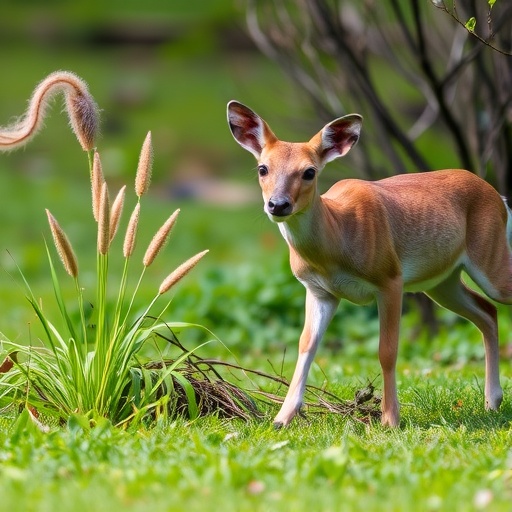Recent research by teams at UCLA and UC Davis reveals a concerning consequence of climate change that has largely evaded public attention: the intensification of human-wildlife conflicts during periods of drought. As precipitation diminishes and natural habitats become increasingly arid, these conflicts surge, placing both human communities and wildlife populations at risk. Published in the prestigious journal Science Advances, this study provides a comprehensive analysis of reported wildlife incidents across California, dissecting the nuanced relationships between environmental stressors and the frequency of encounters with carnivorous species.
The study leverages an extensive dataset spanning seven years, obtained from the Wildlife Incident Reporting system managed by the California Department of Fish and Wildlife. This database, one of the few of its kind, collates community-reported conflicts, ranging from property damage to nuisance behaviors, thereby offering an unprecedented window into the dynamics shaping wildlife interactions during drought conditions. Lead author and conservation ecologist Kendall Calhoun emphasizes the broader applicability of these findings beyond California’s borders, highlighting a global narrative tied intimately to climate change.
Central to the study is the quantification of increased conflict rates associated with declines in annual rainfall. The researchers document a consistent pattern: for every inch decrease in precipitation, human-wildlife incidents rise by approximately 2% to 3%, with certain species exhibiting particularly sharp increases. Mountain lions saw a 2.1% rise in conflict reports, coyotes 2.2%, black bears 2.6%, and bobcats topped the list with a 3% increase. This data underscores not only the scale of the issue but also the differential responses of species to environmental stresses.
A critical challenge in interpreting these conflicts lies in defining what constitutes a ‘conflict.’ Reports vary widely in nature and severity, extending from minor nuisances such as wildlife foraging in residential gardens to more significant property damage. Calhoun acknowledges the subjective nature of these incidents; for instance, a bird feeding on crops might be viewed as either a pest or an essential component of local ecosystem services, depending on the observer’s perspective and stakes involved. This ambiguity complicates efforts to tailor effective management and mitigation strategies.
Notably, the dataset excludes direct attacks on humans, focusing instead on property and nuisance reports, which represent the bulk of human-wildlife friction. This distinction is crucial, as it reframes the narrative away from fear of physical harm toward more prevalent and often overlooked forms of conflict rooted in resource competition. The researchers suggest that drought-driven scarcity in wild habitats compels animals to venture into human-dominated landscapes in search of water and food, thus escalating encounters.
The study also grapples with the question of whether rising reports correspond to actual increases in wildlife populations in urban areas or simply reflect heightened human sensitivity during periods of environmental stress. Calhoun hypothesizes a dual interplay where both ecological shifts and altered human perceptions converge, amplifying conflict reports. Regardless, the research is clear that continued climate change will exacerbate these tensions without proactive interventions.
One promising avenue for mitigation highlighted by the research is the creation and preservation of climate-resilient landscapes that serve as refuges for wildlife during drought episodes. Studies have demonstrated that such refuges provide critical resources that reduce animals’ forays into human spaces. Water conservation efforts, especially those targeting natural ecosystems, could thus play a pivotal role in diminishing conflict frequency by maintaining resource availability within wild habitats.
The rarity of expansive, community-based wildlife reporting systems such as California’s Wildlife Incident Reporting database adds immense value to the study. The researchers applaud the participatory nature of the database, which exemplifies how citizen science can significantly enhance ecological research. Data quality and comprehensiveness foster more robust analyses, enabling finer resolution understanding of the human-wildlife interface under climate pressure.
Exploring the wider implications, Calhoun draws parallels between drought-induced conflicts and the effects of megafires, another climate exacerbated hazard impacting wildlife behavior. Fires often force animals to escape into adjacent safe zones, which frequently overlap with human settlements, thus compounding the challenge of coexistence. These converging stressors collectively demand integrated landscape-level planning attuned to the realities of a warming planet.
Calhoun underscores the imperative of fostering community engagement and environmental stewardship to forge pathways toward coexistence. Public investment in local ecosystems, informed by scientific insights into species’ needs and behaviors, is crucial. While climate change presents daunting obstacles, it also opens the door to innovative management approaches that balance human development with the persistence of wildlife populations.
Ultimately, this study refutes simplistic portrayals of wildlife as invasive threats to human territories. Instead, it reframes human-wildlife conflict as an emergent phenomenon predominantly driven by human alterations to natural resources. By reevaluating management paradigms through a climate and ecological resilience lens, policymakers and communities can chart courses that reduce conflict and promote harmonious coexistence in an uncertain future.
As droughts grow more frequent and severe under climate change scenarios, this research offers both a warning and a roadmap. Mitigating water extraction from wildlands, enhancing habitat connectivity, and fostering community-based science initiatives stand out as critical strategies. Harnessing the power of data and public collaboration, society can better anticipate and adapt to the escalating demands climate change places on both human and wildlife populations.
Subject of Research: Human-wildlife conflict dynamics under drought conditions influenced by climate change.
Article Title: Human-wildlife conflict is amplified during periods of drought.
News Publication Date: 12-Nov-2025.
Web References:
- DOI Link: http://dx.doi.org/10.1126/sciadv.adx0286
Image Credits: Courtesy Brashares Lab, UC Berkeley.
Keywords: climate change, drought, human-wildlife conflict, wildlife conservation, resource scarcity, ecological resilience, urban wildlife, mountain lions, coyotes, black bears, bobcats, citizen science.




